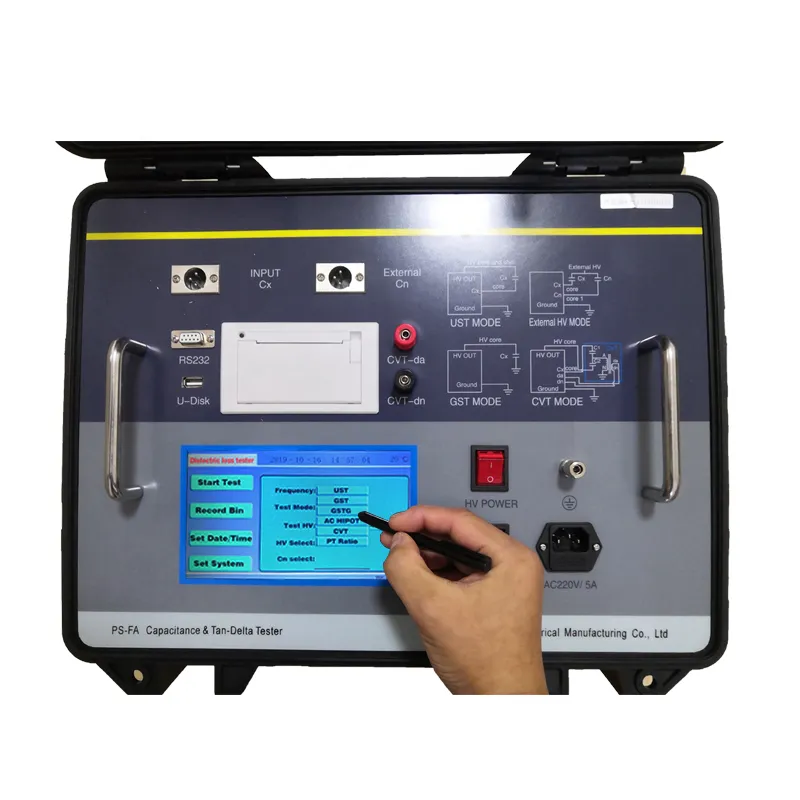 English
English


Understanding the Impact of Tap Changes on Transformer Performance and Efficiency in Power Systems
Tap Change in Transformers Enhancing Voltage Regulation
Transformers play a crucial role in electrical power systems, serving as the backbone for power transmission and distribution. One of the most significant features of transformers is the ability to control voltage levels, which is vital for maintaining system stability and efficiency. One of the methods employed for this purpose is the use of tap changers, which allow for the adjustment of the transformer's turns ratio, thereby regulating output voltage.
What is a Tap Changer?
A tap changer is a device fitted to transformers that enables the adjustment of the winding connections. By altering the number of turns in the primary and secondary windings, the tap changer can effectively change the voltage levels according to the electrical load conditions. This adjustment is typically necessary because the primary voltage from the power source can fluctuate due to varying demand from consumers. Consequently, transformers must be equipped to adapt to these changes, ensuring a stable output voltage.
Types of Tap Changers
There are two primary types of tap changers used in transformers on-load tap changers (OLTC) and off-load tap changers (DETC)
.1. On-Load Tap Changers (OLTC) As the name suggests, OLTCs can adjust the tap settings while the transformer is in operation. This feature allows for real-time corrections to voltage drops or surges in the system. OLTCs are equipped with mechanisms such as motor drives and control systems that enable them to change taps automatically based on predetermined voltage levels. This automation is essential in substations and large industrial applications, where consistent voltage is critical for efficient operation.
2. Off-Load Tap Changers (DETC) In contrast, DETCs can only adjust the taps when the transformer is de-energized. While this type is simpler and less expensive than OLTCs, it is less adaptable to rapid changes in electrical demand. DETCs are often used in smaller transformers or in situations where the load changes are predictable and manageable.
tap change in transformer

Importance of Voltage Regulation
The significance of tap changers lies in their contribution to voltage regulation. Voltage levels must be maintained within a specific range to ensure the safety and efficiency of electrical equipment. Over-voltage can lead to insulation breakdown, overheating, and equipment damage, while under-voltage can cause inefficient operation and lead to equipment failure. Tap changers, by allowing real-time voltage adjustments, play a critical role in minimizing these risks, thereby enhancing the reliability of the power system.
Challenges and Considerations
While tap changers are essential for voltage regulation, their operation comes with challenges. OLTCs, for instance, experience mechanical wear due to frequent operations, which can lead to maintenance issues. Additionally, the switching process can introduce electrical arcing, which stands as a threat to the longevity of the transformer. Thus, regular maintenance and monitoring are necessary to ensure these devices operate effectively.
Moreover, the choice between OLTCs and DETCs involves considerations of cost, complexity, and specific application needs. Industries with variable loads may benefit significantly from OLTCs, while those with stable demands might find DETCs sufficient.
Conclusion
In conclusion, tap changers are integral components of transformer design that significantly enhance voltage regulation in electrical power systems. With the ability to adjust voltage levels dynamically, they ensure the stability and efficiency of energy distribution. As the demand for electricity continues to grow and shift, the role of tap changers will become increasingly important in managing the complexities of modern power systems, ensuring that consumers receive reliable electrical service.
-
Differences between open cup flash point tester and closed cup flash point testerNewsOct.31,2024
-
The Reliable Load Tap ChangerNewsOct.23,2024
-
The Essential Guide to Hipot TestersNewsOct.23,2024
-
The Digital Insulation TesterNewsOct.23,2024
-
The Best Earth Loop Impedance Tester for SaleNewsOct.23,2024
-
Tan Delta Tester--The Essential Tool for Electrical Insulation TestingNewsOct.23,2024





